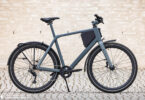At the launch of the Tesla Model 3 in March 2016, Elon Musk reportedly raised $ 135,000,000 through pre-orders. Almost three years later, the first Model 3 rolled onto German roads. While the pre-orders didn’t all follow through, the Model 3 is a success story, nonetheless. We found out whether its popularity is deserved.
According to Elon Musk, the magical price limit for a modern electric car to become a viable option for the masses is $ 35,000, and in the US, where prices are usually given before taxes, Tesla do offer their Model 3 for this price – though only as a slimmed-down basic model that was introduced quite some time after the Model 3 first came to market. In Germany, prices started at around € 44,000, which at the time of market launch in February 2019 was unrivalled for an electric car of this size and performance category.
You can find all electric Cars in our big EV special “Which is the best electric car of 2023?“, where you can also check out our personal EV buyer’s guide – free of charge!


Since then, the pricing policy for the smallest Tesla model to date has been fickle to say the least. You could get the impression that Elon Musk just rolls a dice to make up the price. However, if you take a closer look at the history, the company often had legitimate reasons for the – occasionally extreme – price fluctuations: supply bottlenecks during the COVID pandemic, poor forecasts by the analysts, upcoming quarterly reports, boosting sales of the Model Y, which is also produced in Germany. Recently, the steep price increases of freight and raw materials, coupled with high inflation caused prices to skyrocket, only to plummet at the turn of the year 2022/23 due to low demand. Currently, the basic model is available for € 43,990, whereas our test car, the Model 3 LR with a dual motor, goes for € 53,990 (each including € 3,000 net manufacturer’s contribution to the currently valid environmental bonus). At the end of 2022, you would have paid almost € 60,000 for the exact same vehicle.
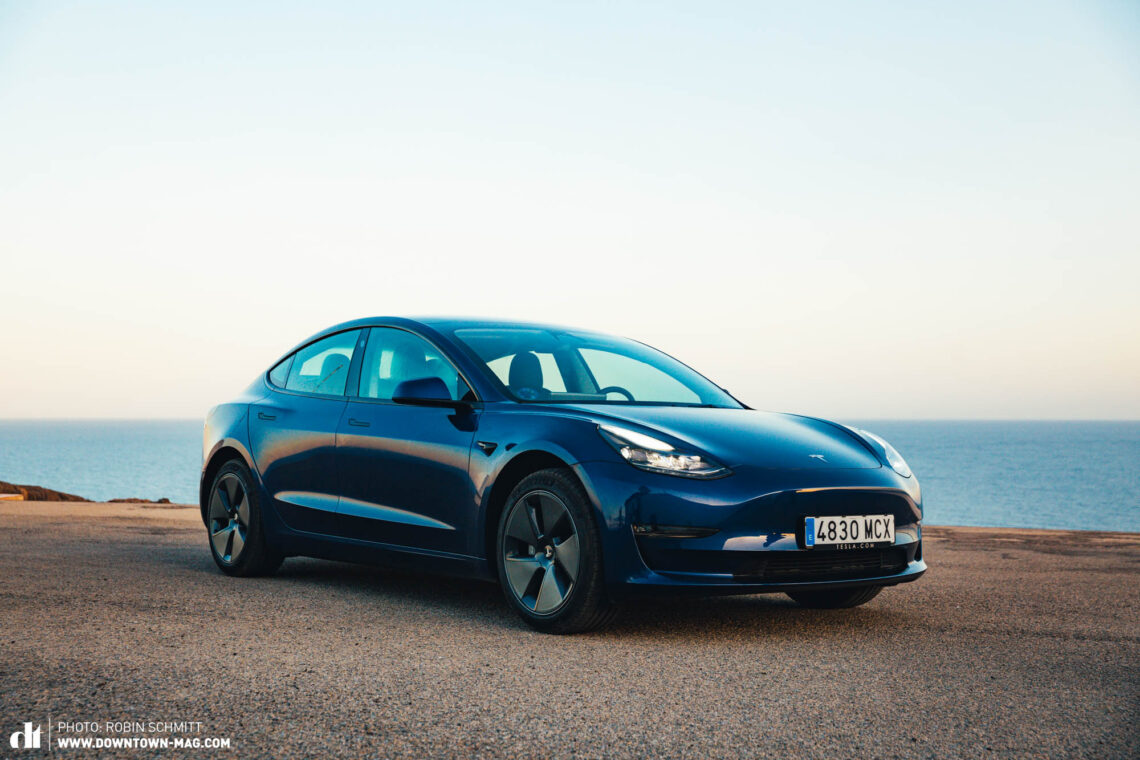
Tesla Model 3 – Is the hype justified?
As much as the prices and sales of the Tesla Model 3 have fluctuated over the past 7 years, as little has changed about the car itself. Few would notice the external changes. The most striking change is the black trim on things like the door handles and window frames, which used to be chrome on earlier models. Oh, and the slightly different headlight design. Significantly more has been done under the hood, or rather under the vehicle: the batteries have become larger, and they’ve upped the charging power. Along with that come new features such as a heated steering wheel and an electric boot lid, not to mention the continuous software development, introducing a stream of new, though not always useful functions.


But this is one of Tesla’s secrets: It’s not so much about the quality of the vehicle and its functions, but about the brand. And you must concede that Elon Musk pushed electromobility like no other, managing to get many EV enthusiasts to first ask themselves whether or not they should get a Tesla before asking which car is best for them and their needs. Once the decision has been made for a Tesla, most are willing to accept many compromises that they might not have to make with other car manufacturers. But Tesla are not merely car manufacturers: for many, Tesla is a way of life.

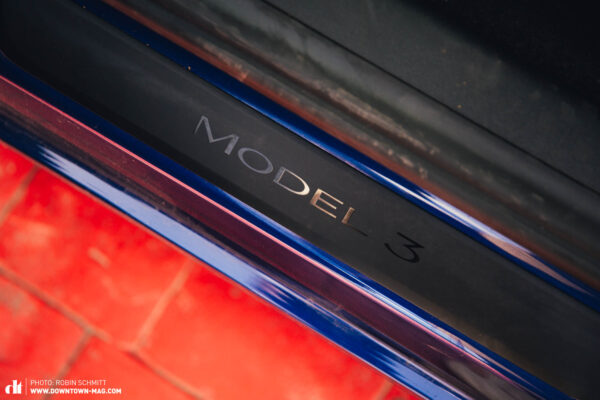
Tesla were the first and for a long time only EV manufacturers to operate their own charging infrastructure. And even if even the latest generation of Tesla superchargers can’t quite keep up with the latest hyperchargers from other operators, the almost nationwide network and uncomplicated charging experience will ultimately be the reason that many purchase a Tesla.
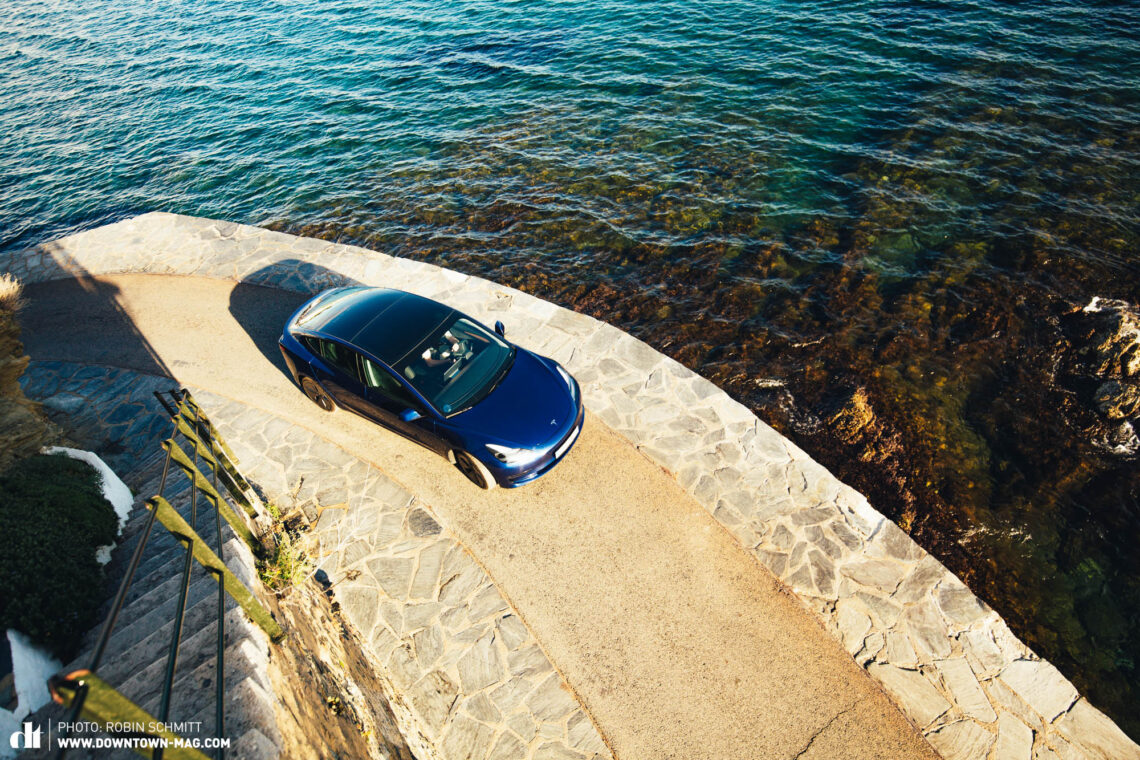
Tesla think and live electromobility more uncompromisingly than most established car manufacturers. This holistic approach is also reflected in their cars. However, the flip side of the coin is that Tesla are a very polarising and politicised car brand, especially with Elon Musk as their divisive figurehead. The dispute with their former supplier Mobileye, for example, meant that it took until 2023 for Tesla vehicles to finally have a usable traffic sign recognition function – a feature that most mid-range cars have had for at least 10 years, and which usually works reliably. Not so with Tesla. Despite numerous cameras, which form the basis of the autopilot feature, the vehicles of the Californian company often displayed a 100 km/h speed limit on suburban roads or drew attention to a 30 km/h sign on a side road while driving on the highway. You just couldn’t rely on the traffic sign recognition until the beginning of 2023. It’s unacceptable – but many Tesla drivers are just as happy to overlook this as they overlook the occasional phantom braking manoeuvre.
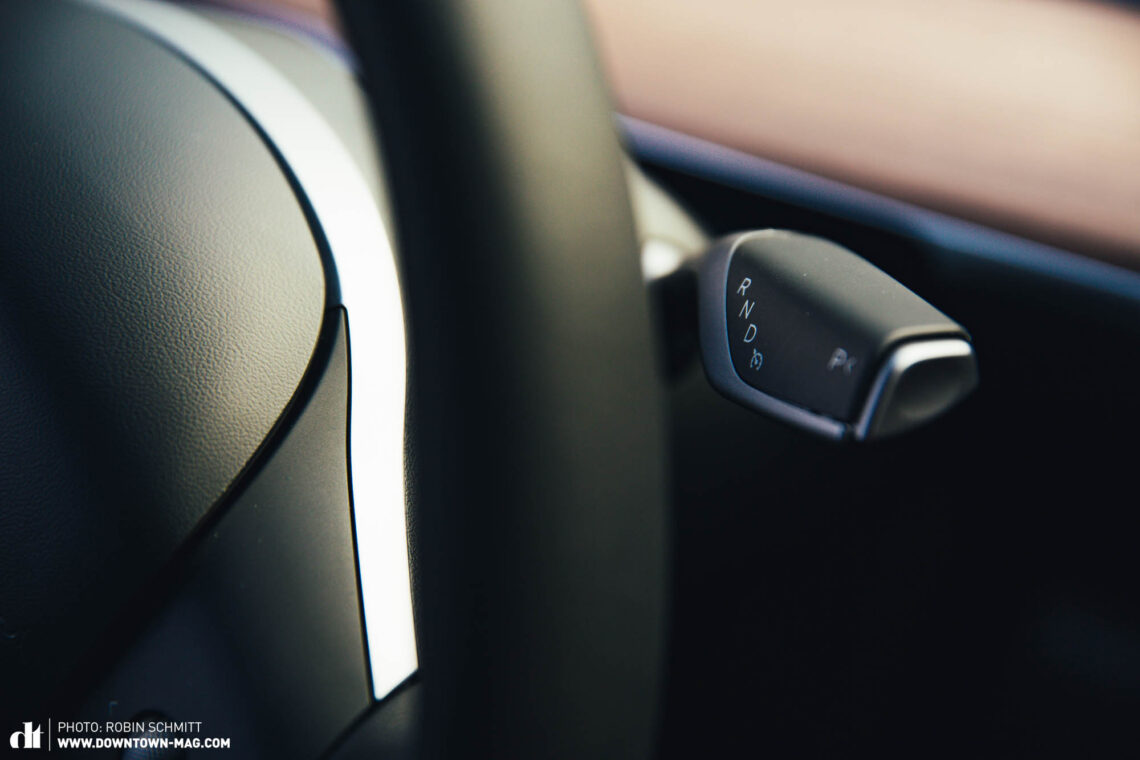
Tesla Model 3 Dual Motor Long Range: Exterior – A Model 3 remains a Model 3 remains a…?
The drag coefficient was obviously the driving force behind the design of the Tesla Model 3. While the mid-range saloon has a very sporty looking silhouette and looks great from behind, the front end looks a bit like a crouching frog. The hood stretches far past the LED headlights and lends the Model 3 a somewhat toy-like appearance. The tinted panoramic roof, which extends all the way over the rear seats, further enhances this impression. But because the Model 3 has been around for more than 7 years now, many have become accustomed to its looks, especially since Tesla haven’t given their most popular model much of a facelift since its introduction. And the drag coefficient of 0.23 is very good indeed. This is partly due to the flush handles embedded in the doors, which often lead to question marks on the faces of Tesla newcomers on first contact.


We can’t confirm the poor quality of workmanship, which was often criticised during the first few years. The tolerances are perfectly fine, and the paint is free of unsightly runs or blisters. That said, the visible sheet metal under the open boot lid is anything but premium. However, this doesn’t detract from its functionality. The somewhat flat opening of the luggage compartment is considerably more annoying, despite offering plenty of storage space. On the other hand, the large frunk and the likewise generous compartment under the boot floor provide real added value. For a four-door sedan, the Model 3 almost passes as a pack mule, making it perfectly suitable for family holidays. To make the most of the available storage space, however, we recommend using soft travel bags instead of ones with hard-shell cases.
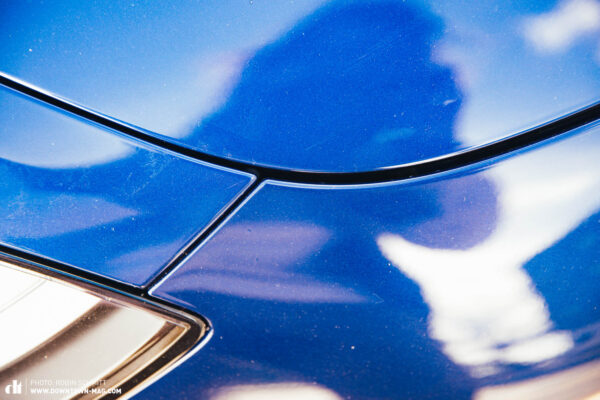
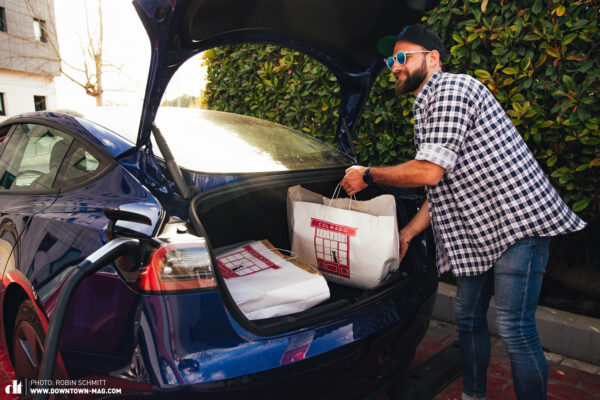
If you need even more space for your loved ones and luggage, you will almost inevitably end up having to go with the big brother. The Model Y looks confusingly similar to the Model 3, though it’s bigger in every way. The assumption that it’s based on the same platform as the Model 3 isn’t true either. Nevertheless, the two cash cows in the Tesla portfolio have a lot in common. The interior looks identical, and there is no relevant difference in the technology either. Tesla limit the performance of the Model Y a little more strictly, which is probably due to the reduced efficiency of the added weight and volume. At 600 litres, however, it has significantly more luggage capacity than the 425 litres of its little brother. And thanks to the large opening of the boot, it’s much easier to access, too. You can get a tow hitch for both models, but not for the performance versions. The Model Y is cleared to pull loads of up to 1,600 kg, whereas the Model 3 is limited to just 1,000 kg.
Tesla Model 3 Dual Motor Long Range: Interior – Reduce to the max?
Almost everyone over the age of 40 will have heard of the slogan “Reduce to the max”, which was first used in 1997 in… the automotive sector. At the time, it was part of Mercedes-Benz’s promotion campaign for the Smart. However, the slogan can be applied to the interior of the Tesla Model 3 just as well. Cockpit? Nope! Round gauges? Nowhere to be seen! Head-up display? Perhaps someday! Buttons and switches? Only where absolutely necessary! In return, you get a 15-inch tablet in the middle of the minimalist dashboard. Countless fingerprints included. So, does this make the Model 3 complicated or unergonomic to operate? Not necessarily, just unfamiliar. But more on that later.
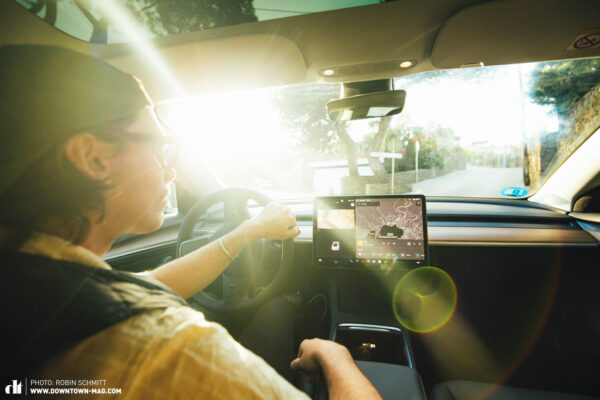

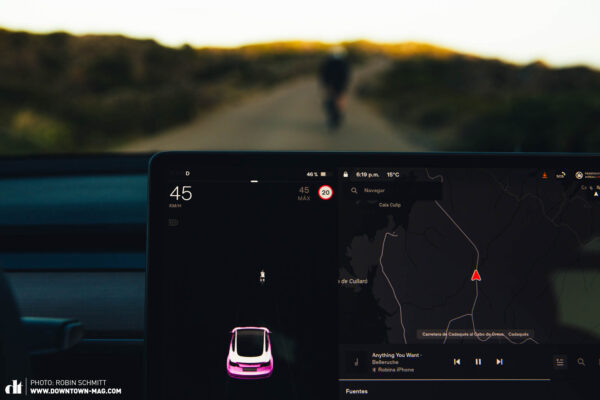
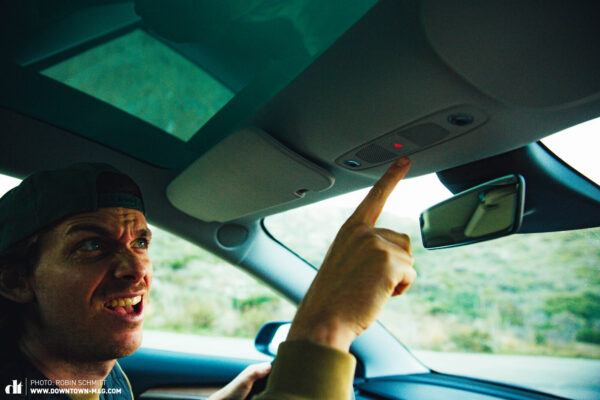
The interior materials look and feel high-quality throughout. However, the door panels are prone to scratching. We were impressed with the seats. They’re electronically adjustable and have a memory function as well as lumbar support, proving to be surprisingly comfortable and suitable for long-distances. However, the synthetic leather tends to creak and make your back sweaty in warm summer temperatures. Unfortunately, there is no seat ventilation available. The same applies to matrix LED headlights. If it isn’t permitted in the US, the world doesn’t need it – at least, that’s according to the Tesla boss.

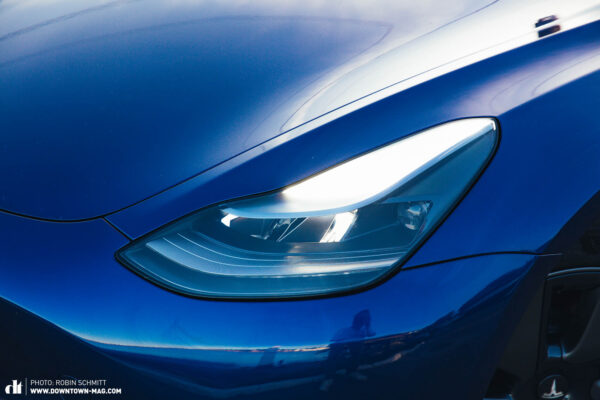
The wide area behind the windshield and the huge panoramic roof create an incredibly spacious and airy feeling, which you would never expect from the exterior view of the rather sleek body. In fact, the lankier amongst us should have more than enough headroom up front, and you’ll feel right at home on the back seat even if you’re 1.80 metres tall. It goes without saying that children have plenty of space. You’ll only have to bend your knees a little more than in an internal combustion driven vehicle due to the battery underneath the floor. There’s sufficient availability of storage compartments, letting you store all kinds of things in the centre console and armrests. You can charge up to two smartphones inductively, while other devices can be connected via USB-C ports in the front and rear. The frameless side windows – which are now double glazed at the front – look the part and give the Model 3 a little coupe flair. Unfortunately, they’re susceptible to wind noise. We only experienced this to a limited extent during our tests, but it’s an issue that comes up in many forums. A visit to the workshop or from a ranger – yes, that’s what Tesla call their mobile technicians – can remedy this.

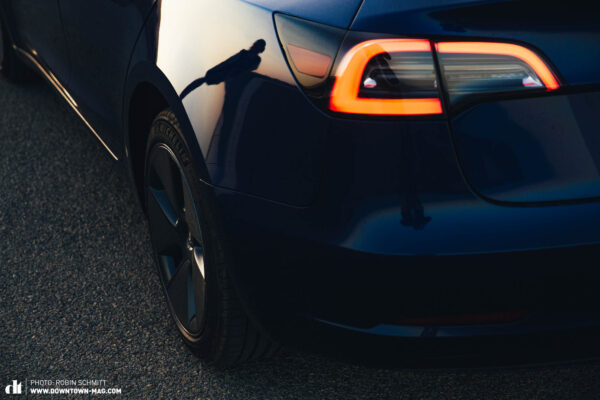
Almost everything in the Tesla Model 3 happens via the centre screen, which is like a tablet placed in landscape format with a 15-inch touchscreen. You’ll look for buttons, controllers, and switches largely in vain. There are both advantages and disadvantages to this. On the one hand, you don’t have to think long about where to go to access any of the settings – your finger will reach for the giant screen almost automatically. On the other hand, many functions and settings aren’t immediately accessible at the push of a button or gesture. To adjust the AC, for example, you must first touch the temperature symbol on the screen to access the desired menu. However, there’s something cool about the visualised air streams that are then displayed, which come from invisible ventilation slots in the trim. It just looks spacey and kind of new school. To open the glove compartment takes at least two steps on the screen – that is if you haven’t secured it with a pin. So, this is something you shouldn’t do while driving. The same applies to the countless entertainment features, especially the games and video apps. However, these can only be used when stationary anyway. That said, the options are unparalleled with Netflix, Disney+, YouTube, and Twitch available for video entertainment, for example. Of course, you’ve also got access to numerous games and music apps such as Spotify, Apple Music, and Tidal. We recommend going for Tesla’s Premium connectivity package for unlimited use. This consists of nothing more than an LTE connection integrated into the vehicle, which costs € 10 per month. If you prefer skipping the subscription, you can use your smartphone’s hotspot instead. Apart from a few minor things, this will give you access to all entertainment and navigation functions.

The user interface in the Tesla Model 3 with its large central touch display certainly takes some adjustment coming from a more conventional vehicle. Nevertheless, it’s quick to get used to, especially since it’s very intuitive. You also have two 5-way controllers on the steering wheel, which you can use to control things like the volume, title selection, and cruise control, just to name a few. And let’s not forget the voice commands. They work perfectly and provide a convenient way to control a wide range of functions.
Tesla Model 3 Dual Motor Long Range: Assist functions – Better than the autopilot of the Mars Rover?
Modern driver assist functions are standard in almost all current vehicles – whether EV or combustion engine. However, it’s only Tesla that use the “autopilot” buzzword, ultimately promising more than you get in reality. Autopilot suggests the possibility of fully autonomous driving: simply enter your destination, sit back, and let the car do the rest, as if by magic. However, the Tesla Model 3 is just as far away from achieving that as its closest rivals. More in some respects, and less in others. Basically, you’ve got all the important electronic helpers on board: steering assist, adaptive cruise control, emergency braking. The special thing about Tesla is that you only get the basic assist functions by default, “autopilot light” so to speak. You can unlock additional features for an extra charge, which you can do at any time via the app. For example, the Enhanced Autopilot costs € 3,800, and for a whopping € 7,500, the Model 3 gains “full potential for autonomous driving”. You’ll find a detailed description of what this entails on the Tesla website. Our test vehicle only came with the basic package.
Visually, the assist functions are accompanied by a display of the road, traffic signs, traffic lights, other road users, and any obstacles on the left half of the 15″ touch screen. This subconsciously instils you with confidence in the system, which mostly works reliably. With a downward tap of the gear selector on the right, you can activate cruise control, and the right 5-way controller on the steering wheel lets you adjust the speed in increments of 1 or 5. A double tap on the gear selector activates autopilot. In other words, it engages the steering assistant, along with other unlocked features such as lane change assist and automatic navigation through motorway intersections. The controls are easy to get accustomed to. However, the fact that the autopilot switches off after every lane change gets very annoying in the long run, especially since the activation and deactivation is always accompanied by an annoying two-tone beep. Fortunately, the steering assist and adaptive cruise control functions are pleasantly inconspicuous and smooth. However, it would be nice if it was a bit quicker when pulling away from traffic lights. That brings us to the hotly debated phantom braking manoeuvres – a phenomenon that affects more or less all vehicles with semi-autonomous driving assist functions. In the Model 3, these abrupt, unnecessary braking processes occur mainly on motorways, usually when visibility is poor or when you approach a car that’s driving quite close to the line separating your lanes. Our DOWNTOWN editor Patrick has been driving a Tesla Model 3 privately for more than two years. In his experience, the functionality of the autopilot has improved significantly over the years. But it’s far from perfect – like the rain sensor, which can’t seem to decide whether you’re in a heavy downpour or a light drizzle. At least the automatic dimming system finally deserves its name since the last update. Previously, it was more like a strobe light without rhythm, earning it the nickname “automatic dazzle”.
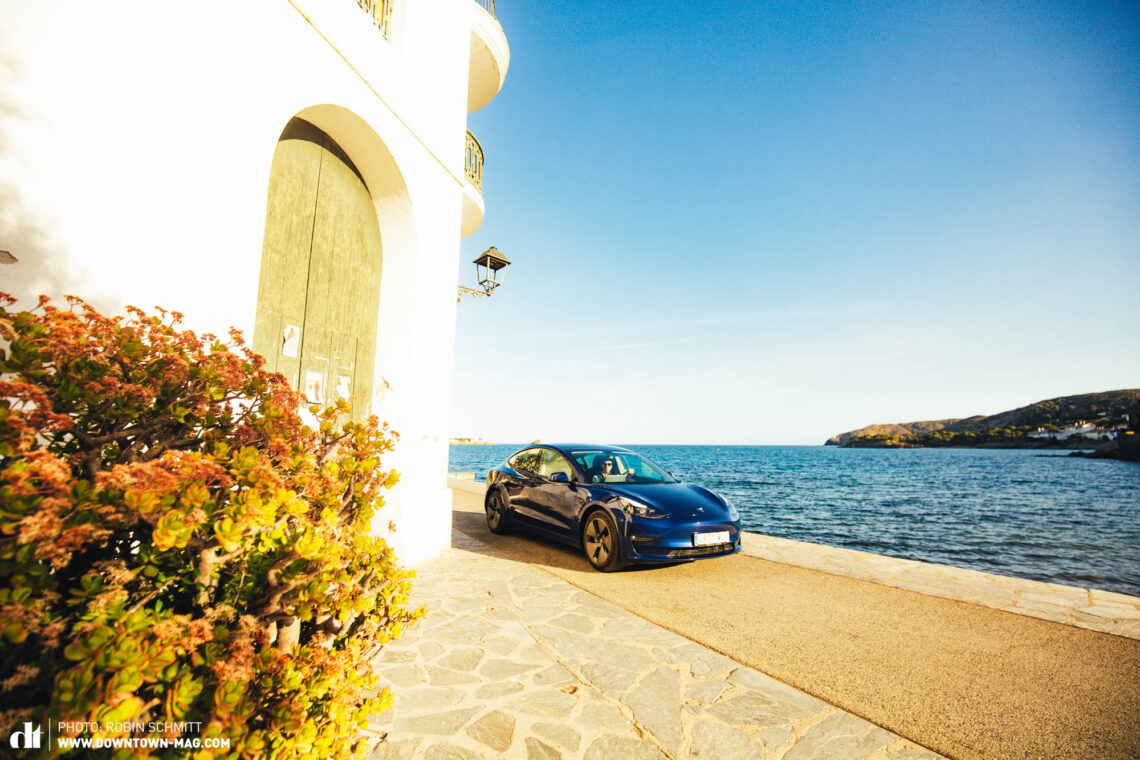
While the first iterations of the Model 3 were still equipped with a combination of radar and camera-based assistants, Tesla switched to a pure camera system in 2021, which Elon Musk has always favoured according to his own statements. Meanwhile, Tesla are also relying on the so-called Vision detection system in their older vehicles, switching the radar sensors off. The ultrasonic sensors will be the next to go. For owners of older vehicles, the switch to Tesla Vision came with noticeable consequences. The top speed for the autopilot was reduced from 150 to 140 km/h, and many cars started having trouble in poor visibility due to fog or rain immediately after the corresponding update: some cars would only drive 50 km/h with the cruise control activated. Speaking of updates: hardly a month goes by in which Tesla don’t release a new version of their vehicle software as an OTA update. This often entails small, incremental improvements or the addition of new system languages. But they’ll usually have a major release around the Christmas season, unlocking features that the Tesla community have been discussing in forums all year long. This will occasionally include such meaningful functions as the “light show” – an entertaining though completely useless light and music show during which the Model 3 projects the Tesla lettering onto a wall, flaps its wings (aka mirrors), and plays a bass-heavy tune. It’s too bad that it doesn’t shake its ass.

Tesla Model 3 Dual Motor Long Range: Charging and range – 600 km from Supercharger to Supercharger?
It’s been a long time coming, but the Model 3 has broken the 600 km WLTP range barrier a few months ago. This is due to continuously improving battery technology – and Tesla’s equally optimised calculation method ;-). It’s an impressive figure on advertising posters, but usually has little to do with reality. As with all EVs, the driving style and temperature have a big impact on range. We must hand it to Tesla that you can reach the factory specification of 600 km in summer temperatures, predominantly in the city and on country roads. Under normal conditions, you will still get about 500 km, and the Tesla Model 3 will even do between 300 and 400 km when driving on the motorway at an average speed of 120 km/h – depending on the outside temperature. Currently, there is no other EV on the market that’s capable of matching that. If so, then only on paper. Only the first generation of the Hyundai IONIQ was more efficient; it could squeeze up to 280 km from its 28-kWh battery, which is tiny by today’s standards – assuming a certain degree of asceticism on the part of the driver.
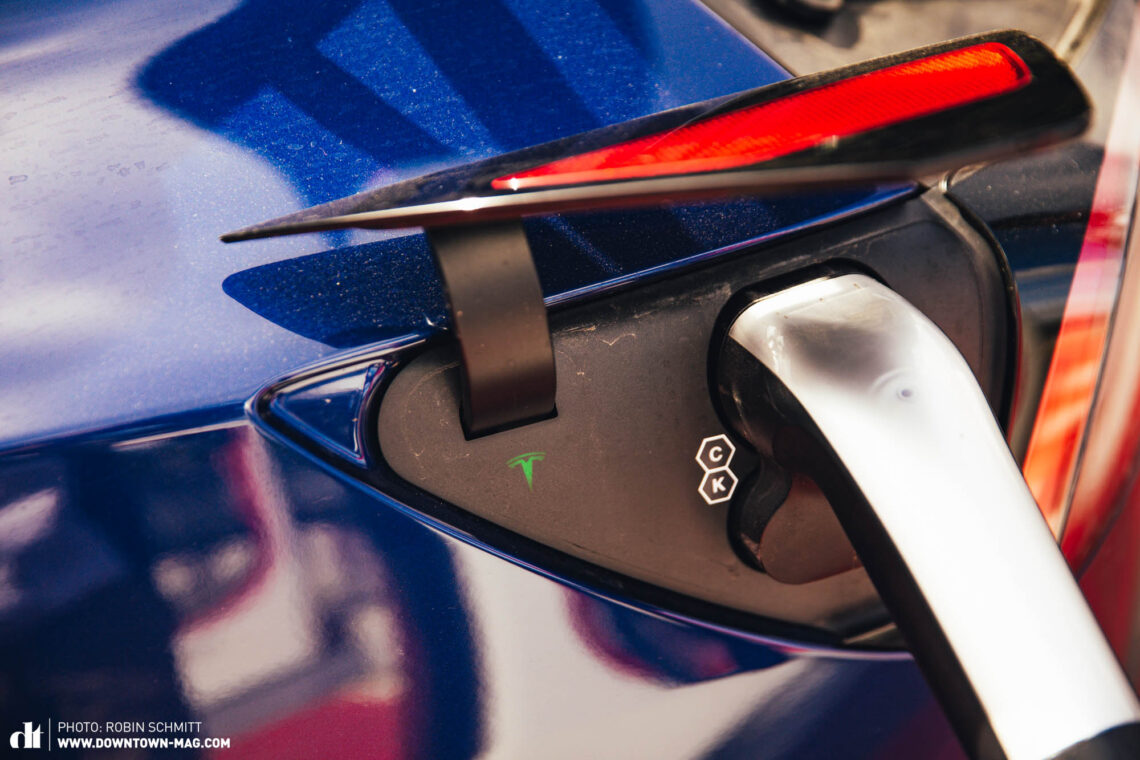
In addition to the comparatively long range, the perfectly integrated network of in-house Superchargers also makes travelling a lot more relaxed. Simply enter your destination – preferably via voice command – wait a moment for it to calculate, and you’ll have a Google Maps based route with integrated charging stops. This worked so reliably during our tests that we stopped thinking about route planning after just a few days… until we decided to use fast chargers from other providers. As seamless as the integration of the Superchargers is, they aren’t always the cheapest and they’re usually situated close to the highway. Tesla have started including other hyperchargers in the maps of its navigation system for some time now, which can also be navigated to quite comfortably. Even the automatic battery preheating works reliably with the fast chargers that are stored in the navigation system, which is an absolute must in winter. However, only Elon himself knows why the system doesn’t take these chargers into account in its route planning. Due to this, the Model 3 will occasionally plan a completely superfluous Supercharger stop into its route right after a charging stop at a different provider. By the way, the Model 3 doesn’t benefit from the theoretically higher charging speed of modern hyperchargers. Tesla still rely on 400 V technology, which allows for an output of up to 250 kW in the Model 3. However, the charging power decreases significantly from about 10–15% SoC. When the battery is half full, you only get around 100 kW in good conditions. Vehicles like the Audi E-Tron, Porsche Taycan, and current models from the Hyundai Group show the potential of 800 V technology, with a charging power of over 150 kW up to an SoC of 80% not being uncommon. And, ultimately, your long-distance travelling speed is always a function of range and charging speed.

In the long-range version on test, the Tesla Model 3 is perfectly suited for long distances despite the rapid drop in charging power. Charging stops usually take about 15–20 minutes (due to the charging power curve mentioned above). This lets you achieve an average cruising speed of just over 100 km/h on very long distances – at least on German highways. However, things start looking a little less rosy in the EV world with a carrier on the roof or an ebike on the tow hitch, which can double the highway consumption! And should recharging take a little longer, just check out our article on making the most of your time spent at charging stations. The very detailed battery level indicator of the Model 3 is a helpful tool in calculating the range. It calculates how the current driving style, weather, and other variables affect the expected consumption in real time. And it even gives you a recommended speed range that’s the sweet spot in terms of efficiency. However, Tesla are quite cautious here by German standards, recommending a speed of around 100 km/h.
Tesla Model 3 Dual Motor Long Range: Day to day – One car for both travel and fun?
Electric vehicles are generally known for their instant power delivery. Tesla, however, set the bar in this regard, though the Californian brand don’t indicate the performance of their vehicles very accurately, providing varying information about the Model 3 depending on the source. However, the maximum output should be around 340–366 kW, which is equivalent to somewhere between 460 and almost 500 hp from a good old combustion engine. It certainly feels like it, so if you’re new to EVs, we recommend using the “Casual” driving mode to get accustomed to the brute acceleration force. Thanks to all-wheel drive, the Model 3 can also transfer all that power to the road, at least in dry conditions. Watching the reaction of your passengers when they experience this for the first time doesn’t get old. Beware: not all stomachs can handle going from 0 to 100 km/h in 3.3 seconds. And if that’s not enough, you can use the Tesla app to cut that down by half a second, enabling the two electric motors to generate about 50–70 hp more power for an additional charge of € 1,800. However, if you’re expecting it to drive like a sports car, you’ll be disappointed. After all, the Tesla Model 3 is nothing more than an extremely powerful saloon. This is also reflected in the handling. As quickly as the car accelerates in a straight line, so conservative it feels in the corners. Like a well-behaved family sedan, it understeers rather than breaking out the rear. What would be a hindrance on the racetrack, however, greatly benefits the car in everyday life. We liked the different steering modes, ranging from light to firm and sporty. The handling of the Tesla Model 3 is good-natured, it tracks well in a straight line with the standard 19-inch wheels, and the chassis only shudders when you hit a big pothole or the like.
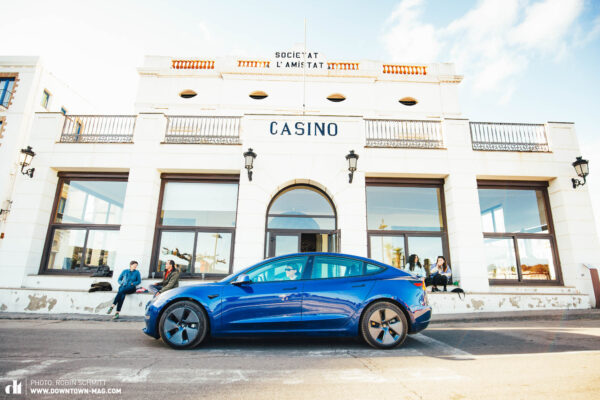
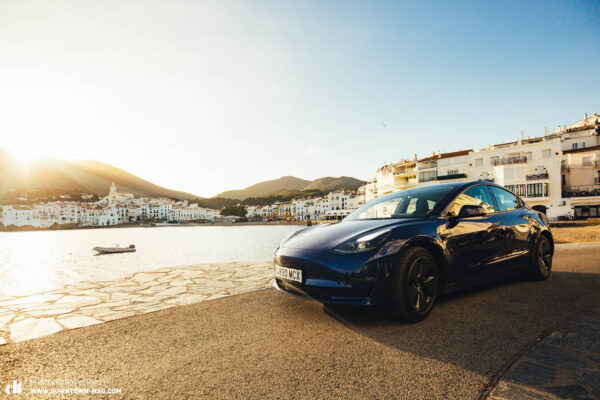
The bottom line is that the Model 3 is geared much more towards comfortable travelling than to shenanigans. That said, if you’ve got someone riding on your tailgate in a V8, you can give them a taste of your non-existent exhaust fumes. Beyond the 100 km/h mark, however, you should concede defeat and pull over into the slow lane. It’s at this point that the Model 3 will run out of steam, at least when it comes to sports car performance. Long journeys, city traffic, holidays with the family – this is the home turf of the Californian brand’s cash cow, where it will perform dutifully, and no worse than a comparable combustion driven vehicle.

We had the winding roads around the former fishing village of Cadaqués on the Catalan Costa Brava almost to ourselves in the winter, giving us plenty of opportunity to thoroughly test and experience the Model 3. First of all, we had to get used to the rather high degree of non-configurable regenerative braking, which makes the brakes seem rather weak in comparison during harder braking manoeuvres. This is ultimately because the mechanical brakes are hardly ever needed. In addition, we missed the brake pedal throw that we’re used to from most other vehicles. In the Model 3, we noticed the brakes engaging pretty much immediately. The acceleration is a lot of fun on narrow and winding roads, though the tram-like sound isn’t very fitting, unfortunately. We would like to see Tesla introduce some kind of a soundscape, such as in the Porsche Taycan – for an additional charge if necessary. We weren’t thrilled with the still rather large turning circle either, especially through tight corners. While this isn’t all that important on German roads, it becomes a factor to consider when travelling along the Mediterranean coast. On the upside, the many cameras of the Tesla Model 3 prove to be very helpful when navigating tight bends. When the indicator is on, you can see the image of the rearward facing camera in the central display, which, unlike the mirror, doesn’t have a blind spot. Although looking at the display instead of the side mirror when turning is somewhat confusing at first, it’s a clear safety improvement.
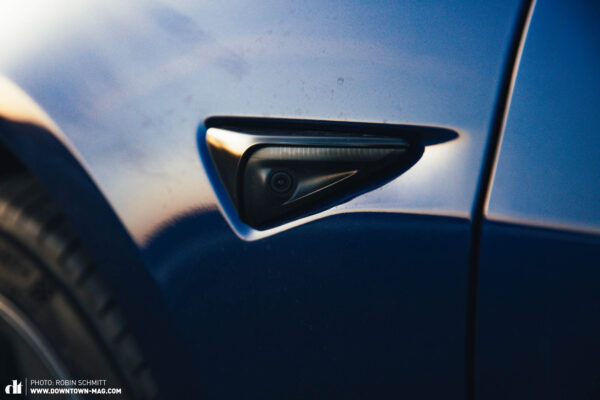
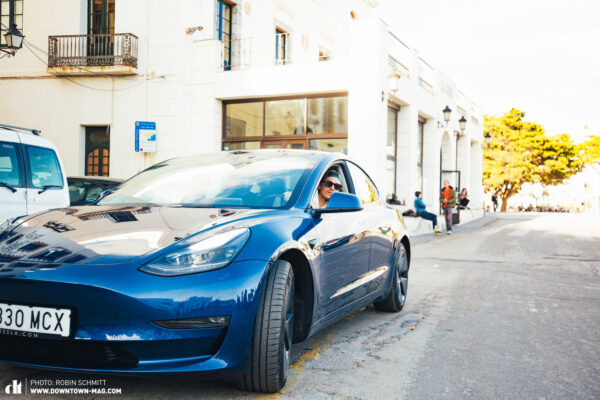
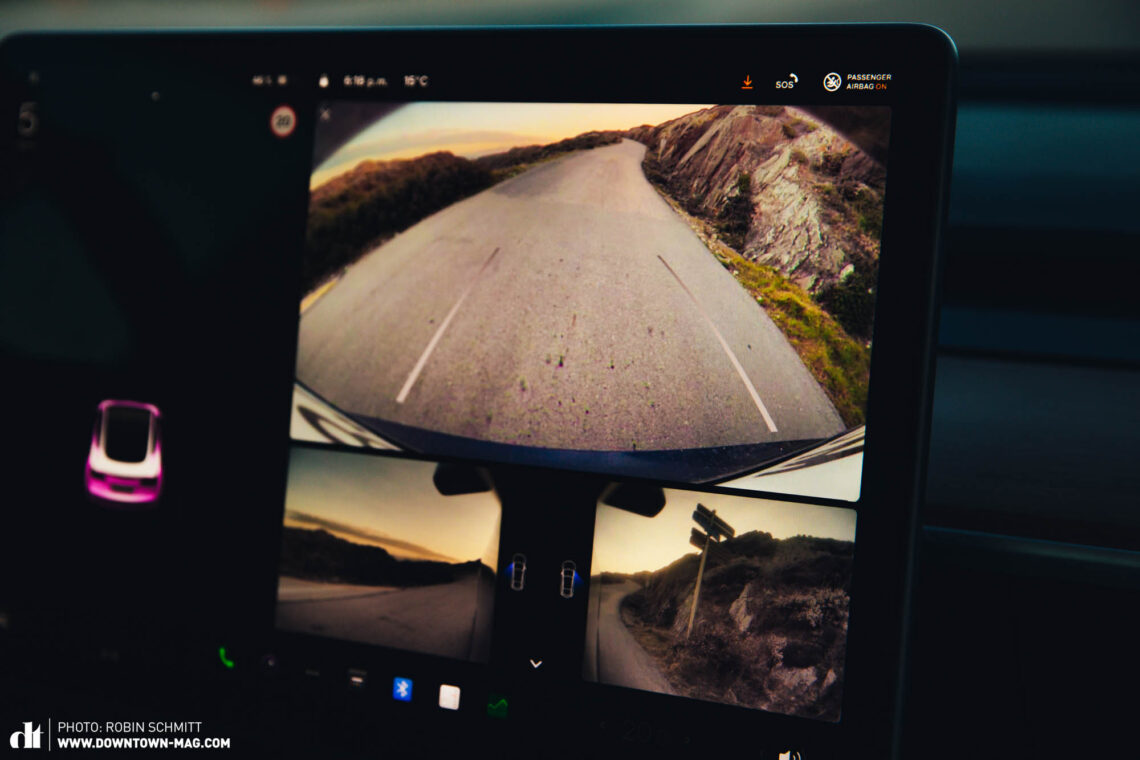
After our workation – an appealing combination of testing a car and enjoying the scenery – in a beautiful, picturesque environment, we can attest to the high day to day convenience of the Tesla Model 3. Despite several day trips, we only had to recharge once, which was partly due to the mild temperatures, of course. But apart from that, Tesla’s car for the masses was uncomplicated and stress-free.
Our conclusion on the Tesla Model 3 Long Range Dual Motor
Is the Tesla Model 3 the best EV on the market? Yes and no. Yes, because no other manufacturer is as uncompromisingly E, and this philosophy is reflected in countless regards on the Model 3. And no, because this uncompromising attitude – including that of Elon Musk – requires a willingness to compromise on the part of potential buyers. In terms of range, charging, and comfort, the Model 3 performed convincingly across the board. But a modern car should also have modern features like a head-up display, matrix LEDs, and at least a small selection of optional extras. Let’s hope Elon Musk also realises this, because he has long proven the everyday suitability of electric mobility with the Model 3.
Tops
- systematic and consistent implementation of electro mobility
- excellent efficiency despite extremely high performance
- perfect integration of Superchargers in the route planning
Flops
- autopilot has some weaknesses
- hardly any optional extras and a lack of modern features
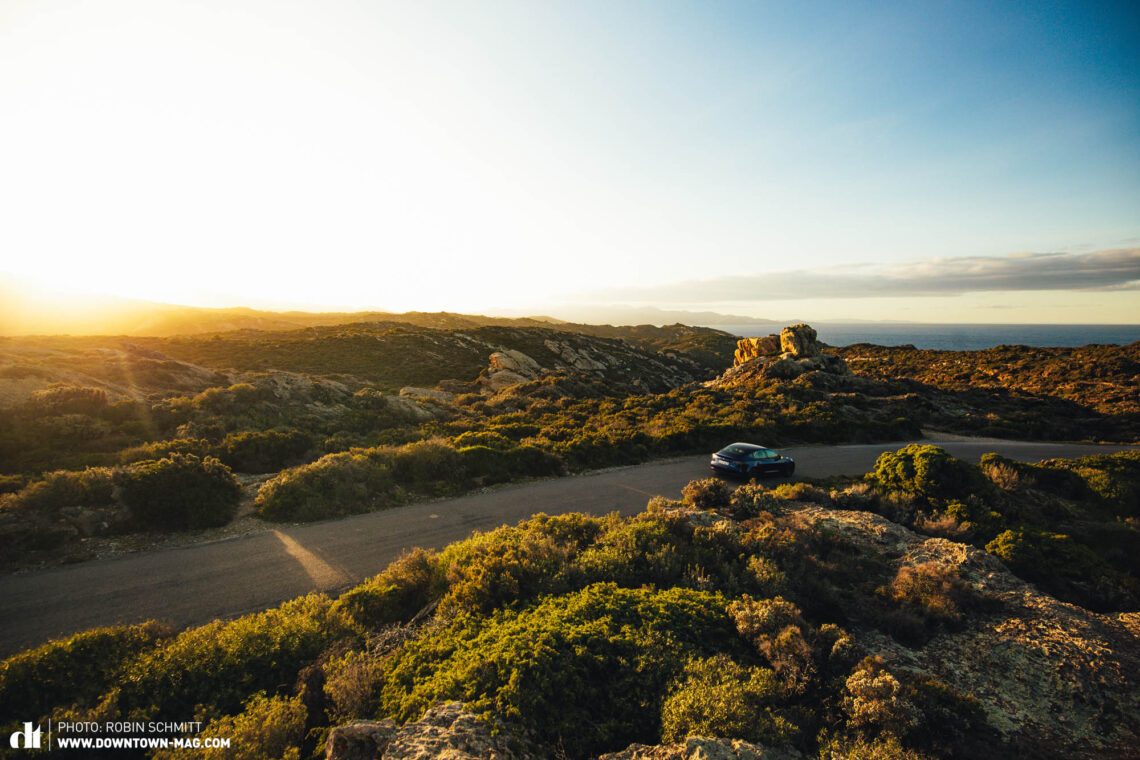
All tested e-cars: City Transformer Prototyp | Fiat 500e | Honda e | KIA EV6 | Opel Rocks E | Polestar 2 | Porsche Taycan | Smart EQ Forfour | Tesla Model 3 Dual Motor Long Range | VW ID.3 | VW ID.BUZZ
Words: Patrick Gruber Photos: Robin Schmitt





